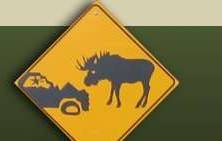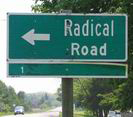
Ulli Diemer — Radical Digressions
Articles Lists
- Selected Articles
- Articles in English
- Articles in French
- Articles in Spanish
- Articles in German
- Articles in Other Languages
- Articles A-Z
- RSS feed
- Subject Index
Selected Topics
- Alternative Media
- Anarchism
- Bullshit
- Capital Punishment
- Censorship
- Chess
- Civil Liberties
- Collective Memory
- Community Organizing
- Consensus Decision-making
- Democratization
- Double Standards
- Drinking Water
- Free Speech
- Guilt
- Health Care
- History
- Identity Politics
- Interviews & Conversations
- Israel/Palestine
- Libertarian Socialism
- Marxism
- Men’s Issues
- Moments
- Monogamy
- Nature
- Neo-Liberalism
- New Democratic Party (NDP)
- Obituaries & Tributes
- Political Humour/Satire
- Public Safety
- Safe Spaces
- Self-Determination
- Socialism
- Spam
- Revolution
- Trotskyism
Blogs & Notes
- Latest Post
- Notebook 11
- Notebook 10
- Notebook 9
- Notebook 8
- Notebook 7
- Notebook 6
- Notebook 5
- Notebook 4
- Notebook 3
- Notebook 2
- Notebook 1
- Scrapbook
Compilations & Resources
- Connexions
- Other Voices newsletter
- Seeds of Fire
- Alternative Media List
- Manifestos & Visions
- Marxism page
- Socialism page
- Organizing Resources
- People’s History, Memory, Archives
- Connexions Quotations page
- Sources
- What I’ve been reading
- What I’ve been watching
Words of Wisdom
- Revolution is necessary not only because the ruling class cannot be overthrown any other way, but also because the class overthrowing it can only in a revolution succeed in ridding itself of all the muck of ages and become fitted to found society anew.
- – Karl Marx & Friedrich Engels

Heat Wave
By Ulli Diemer
July 9, 2020
It’s hot. It’s really hot. It has been hot for days in Toronto, and the heat isn’t going away.
I am sitting in my air-conditioned home, reading and writing. Ever since COVID arrived, I have been working from home, so when it is this hot, I mostly stay inside during the day, and only head out for walks early in the morning, and later in the evening. I am very aware of how lucky and privileged I am to have the luxury of living the way I do.
I just picked up Jane Jacobs’ 2004 book Dark Age Ahead (a great book which I highly recommend) and re-read the chapter in which she talks about the 1995 heat wave in Chicago. More than one thousand people in excess of the usual number for that period were admitted to hospitals because of heatstroke and other related effects of the heat. Deaths in Chicago during that week were 739 in excess of a typical summer week. There were so many dead that a fleet of refrigerated trucks belonging to a local meat-packer were used to store the bodies, and even that proved not to be enough. Inevitably, those who died were predominantly poor and elderly.
The chapter in Jacobs’ book in which she discusses these events is called “Science Abandoned.” In the aftermath of these horrific events, as Jacobs relates, the U.S. Centers for Disease Control and Prevention (CDC) sent a large research team to Chicago to discover what went wrong and to identify ways of preventing future similar tragedies. The researchers paired each dead individual with someone who survived to see what differences could be identified.
Here is how Jane Jacobs sums up this massive research effort:
“This swift and Herculean effort by eighty researchers, their supervisors, and the high-powered designers of the study was worthless, because it turned up only what everybody already knew, including the meteorologists who had issued the early warnings [to use air conditioners, drink plenty of water, and seek cool places]. Those who died had run out of water, had no air-conditioning, did not leave their rooms to find cool refuge, and were not successfully checked up on. Indeed, the researchers’ finding were worse than useless. Survivors differed in having successfully kept cool. The findings were misleading because they encouraged blaming the victims: after all, they hadn’t looked after themselves.”
Jacobs contrasts the CDC’s approach with the approach taken by a single graduate student, Eric Klinenberg, working on his own, who noted that some districts of the city had considerably higher death rates than other districts, and asked why that was so. He looked at two adjacent districts, South Lawndale, where the death rate was fewer than 4 per 100,000, and adjacent North Lawndale, where the death rate was more than 10 times as high, 40 per 100,000. Klinenberg’s findings were subsequently published in Heat Wave: A Social Autopsy of Disaster in Chicago.
South Lawndale, he found, was densely populated, with many stores and lots of street life. Old people were accustomed to walking outside, knew storekeepers, and had no hesitation about hanging around in their air-conditioned spaces, where they also had access to water.
North Lawndale was much less densely populated. Much of the industry that had been located there had closed, their former presence marked by empty lots. Large numbers of residents had then moved out of the area, and as people left, stores closed and were boarded up, making the area unattractive to new immigrants to move to, and unattractive for walking. The remaining residents, predominantly old, had little reason to go outside because there was nowhere to go, tended to be afraid to leave their apartments, didn’t know their neighbours, and were often reluctant to answer the door if a stranger sent by the city came to check up on them.
And so many of them died, alone in their sweltering apartments, increasingly disoriented, and with no idea of what to do or who to call.
This is not just something that happened 25 years ago. It is the story of the present, and increasingly the future, as our planet heats up. Like COVID-19 and much else, extreme heat disproportionately affects the poor and the elderly. They are the ones who often don’t have air conditioning, and often they live alone with no support networks. Toronto has opened some cooling centres, which is good, but you need Internet access to find out where they are, and hours and access are limited because of COVID-19 restrictions. Many older people are also afraid to leave their homes because of their fear of being exposed to the virus. It is very likely that some of them will die, not of the virus, but of the heat.
I wish I had some simple solutions to offer, but I don’t.